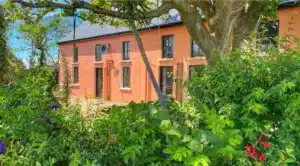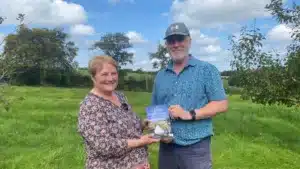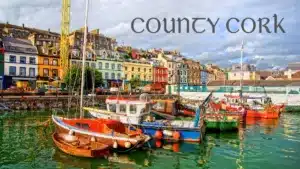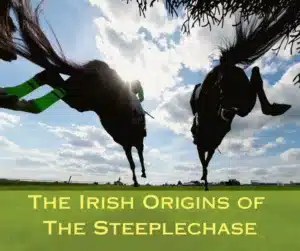Would You Like to Hear the Tale of an Irish Knight?
Did you ever wonder if you might have an Irish knight in your family tree? In this letter, we go back in time to the Ireland of the 1100s, where Norman knights were invading, settling, and passing their names down to future generations of Irish.

I’m having a cup of Barry’s tea this morning as we chat and I hope you’ll have a drop of whatever you fancy as you join me for today’s Letter. In fact, the Barrys of Cork have a small part to play in today’s letter.
Over in The Green Room, I received a note from one of our members:
“My name is George Sliney of Irish descent. Though the name gets a lot of strange looks and comments over the years, I looked in the phone book when visiting Cork and found pages of Sliney names. Made me feel very good.”
As well it should George! You see, Sliney is one of those Irish names that is confined to a specific area of Ireland – and you will get some funny looks when you travel with your name outside these areas. “Sliney? No, never heard of it. Are you sure it’s an Irish name?” Now, let’s tell the story of the Sliney name in a nice roundabout (i.e. Irish) way.
Would You Like To Hear a Knight’s Tale?
Robert FitzStephen was born in Wales about 1120. He was a noble Welsh Knight – the grandson of the last King of south Wales – Rhys ap Tewdwr. As a soldier, he was involved in many of the power struggles in the area and eventually found himself, at the age of 45, the prisoner of a local Welsh lord.
At the same time, Diarmait Mac Murchada (McMurrough), the recently deposed King of Leinster in Ireland – traveled to England, Wales and France to raise a mercenary army to help restore him to his throne. On his journeys, he appealed to FitzStephens captors to release him, as the steady hand and experience of such a soldier would be a huge asset for the mission. He was successful, and on the first of May, 1169AD, Robert FitzStephen led a force of about 400 mercenaries to Bannow strand in modern County Wexford. The Norman “invasion” of Ireland had begun.
FitzStephen was joined at the time by a number of other prominent Welsh-Norman knights – many of whom were related to him. They included holders of many prominent names in Ireland today such as Prendergast, Barry, Cogan and Fitzgerald. However, while these names might be familiar to you – maybe you already notice that the surname “FitzStephen” is very rare in Ireland today? So, what happened?
Well, in 1177AD FitzStephen was awarded land in Cork and Waterford by the King of England. The land stretched from Lismore to Ardmore and west to Cork city. All through his tenure in those parts, FitzStephen had trouble protecting his lands against the native Irish of the time. By 1180 – at the age of 60, he was without official male heir and ceded his lands to his half-nephew, Philip de Barry. He died about two years later but we are uncertain of the exact date and location.
And so the Barry family came to dominate across that part of east Cork, become a prominent Cork surname and one of their branches eventually ended up brewing my Barry’s Tea! But, what about the FitzStephens?
Well, over the following century or so – the FitzStephens remained in that area of east Cork and west Waterford. From about 1250 onwards, many of these Norman families started to become more and more Gaelic – or “hibernicised” as we sometimes call it. They adopted the Irish language, following Gaelic Brehon law and intermarried with the local Gaelic Chieftain families to expand their power.
Many of these hibernicised Norman families – the Barry, Cogan, Barret families maintained their original Norman surnames.
Would you like to add your Irish Norman surname to our list? Just Signup for your free weekly Letter from Ireland by clicking here. – and we’ll let you know how to join in the fun.
In the case of the FitzStephens, they appear to have assumed an Irish “Patronymic” along the way and at some point in time became known as “Mac Sleimhne” (Mock Sley-na). As the centuries went on, the names of Ireland became anglicised – and Mac Sleimhne became known as “Sleyne” and “Sliney” (pronounced “Sly-ney).
And if you look for Slineys in Ireland today, you will find them in an area from Lismore to Ardmore and westward to the town of Midleton in Cork. The same lands awarded to Robert FitzStephen all those centuries ago!
Do you have a Norman Irish surname in your family tree?
Slán for this week, Mike and Carina.







Only Plus Members can comment - Join Now
If you already have an account sign in here.